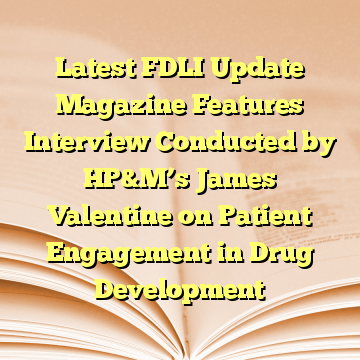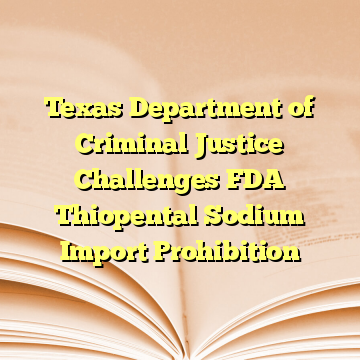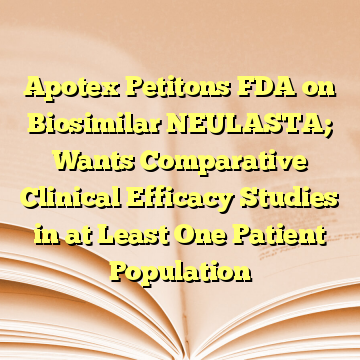
By Kurt R. Karst –
As simple as it may seem, counting can be a difficult human endeavor! You need only recall Monty Python’s Holy Hand Grenade of Antioch skit to cement that fact! Over the years we’ve commented (e.g., here) on the difficulty with counting to 60. That’s the magic number – the deadline from FDA approval – under the Patent Term Extension (“PTE”) statute, 35 U.S.C. § 156, to timely submit to the Patent and Trademark Office (“PTO”) an application to extend the term of a patent claiming a product (such as a drug or medical device) subject to a regulatory review period. Last minute PTE submissions to the PTO, which should and can be avoided, are not uncommon and have generated a lot of controversy. The latest controversy involves Franklin, Tennessee-based BioMimetic Therapeutics, LLC’s (“BioMimetic’s”) Augment Bone Graft.
But before we get into the details surrounding the submission of the PTE applications for the Augment Bone Graft, a little statutory background is warranted. . . .
Under the PTE statute the term of a patent claiming a drug is extended from the original expiration date of the patent if: (1) the term of the patent has not expired; (2) the patent has not been previously extended; (3) the PTE application is submitted to the PTO by the owner of record within 60 days of approval; (4) the product, use, or method of manufacturing claimed has been subject to a “regulatory review period” before it is commercially marketed; and (5) the PMA is the first permitted commercial use of the product.
With respect to the timely filing requirement, the statue, at 35 U.S.C. § 156(d)(1), provides, in relevant part:
To obtain an extension of the term of a patent under this section, the owner of record of the patent or its agent shall submit an application to the Director. Except as provided in paragraph (5), such an application may only be submitted within the sixty-day period beginning on the date the product received permission under the provision of law under which the applicable regulatory review period occurred for commercial marketing or use. . . .
Furthermore, in order to determine when the 60-day time period begins, the following sentence was added to 35 U.S.C. § 156(d)(1) as part of the 2011 America Invents Act:
For purposes of determining the date on which a product receives permission under the second sentence of this paragraph, if such permission is transmitted after 4:30 P.M., Eastern Time, on a business day, or is transmitted on a day that is not a business day, the product shall be deemed to receive such permission on the next business day. For purposes of the preceding sentence, the term “business day” means any Monday, Tuesday, Wednesday, Thursday, or Friday, excluding any legal holiday under section 6103 of title 5.
FDA purportedly approved Augment Bone Graft on September 1, 2015 under Premarket Approval Application (“PMA”) P100006. The approval letter was emailed to BioMimetic at 9:06 AM (Eastern) and acknowledged by the company at 9:15 AM (Eastern).
We say that FDA “purportedly” approved PMA P100006 on September 1, 2015, because the signature on the approval letter was actually made the night before. Clicking on the signature block in the FDA PMA approval letter – using the Internet Explorer web browser but not another web browser – shows the signing time from the clock on the signer’s computer as August 31, 2015 at 8:18 PM (Eastern), and specifically as “2015/08/31 20:18:59 – 04’00’.” Thus, despite the September 1, 2015 date stamp on the PMA approval letter, query whether the signature date and time are potentially relevant. In any case, for our purposes here, we assume the PMA approval occurred on September 1, 2015.
The Augment Bone Graft is covered by several patents, including three of which are the subject of PTE applications submitted to the PTO:
U.S. Patent No. 7,473,678 (“the ‘678 patent”) (FDA Docket No. FDA-2016-E-2396);
U.S. Patent No. 7,799,754 (“the ‘754 patent”) (FDA Docket No. FDA-2016-E-2441); and
U.S. Patent No. 8,106,008 (“the ‘008 patent”) (FDA Docket No. FDA-2016-E-2442).
The PTE application for the ‘678 patent was submitted to the PTO on Saturday, October 31, 2015. The PTE applications for the ‘754 and ‘008 patents were submitted to the PTO on Monday, November 2, 2015.
On June 14, 2016, the PTO issued an Order to Show Cause with respect to each of the PTE applications for the ‘678, ‘754, and ‘008 patents – available here, here, and here – “based on the apparent untimely filing” of the PTE application. According to the PTO, the 60-day PTE application submission deadline was October 30, 2015, but the PTE application for the ‘678 patent was filed one day late (on October 31, 2015) and the PTE applications for the ‘754 and ‘008 patents were filed three days late (on November 2, 2015).
BioMimetic responded to each Order to Show Cause a few months later, on August 12, 2016 – available here, here, and here. The nearly identical responses raise the issue of whether or not the statutory 60-day period means 60 full days, or something less:
[T]he statute and implementing regulations do not provide applicants fifty-nine days plus some fraction of a day to file a patent term extension application. Instead, they provide applicants a full sixty-day period. Because the PTO’s interpretation of the statute would deprive Applicant of the full sixty days to which it is entitled, that interpretation must be amended.
The date on which the sixty-day period begins is not dispositive here. Whether the trigger date is the date of the PMA approval letter (as asserted by the PTO in the Order) or the following day, the outcome is the same: Applicant’s PTE application was timely filed.
At issue is whether the end of the sixty-day period may be calculated in a manner that deprives applicants of the full sixty days accorded by the statute. It may not. Such a calculation is not only precluded by the plain language of the statute; it would also contravene the settled principle that remedial statutes such as Section 156(d)(1) should be construed liberally. [(Emphasis in original)]
According to BioMimetic, because the 60-day period did not begin any earlier than 8:06 AM (Central) on September 1, 2015, “the end of the first day of the sixty-day period could not have been any earlier than 8:06 am on September 2, 2015,” and “the end of the sixtieth day of the sixty-day period was not (and could not have been) any earlier than 8:06 am on Saturday, October 31, 2015.” And because October 31, 2015 was a Saturday, says BioMimetic, 35 U.S.C. § 21(b) dictates that “the last day for filing the patent term extension application . . . was automatically extended to the next succeeding secular or business day, i.e., Monday, November 2, 2015.” (The statute, at 35 U.S.C. § 21(b), explains that “[w]hen the day, or the last day, for taking any action or paying any fee in the [PTO] falls on Saturday, Sunday, or a Federal holiday within the District of Columbia, the action may be taken, or the fee paid, on the next succeeding secular or business day.”)
The PTO has not yet addressed BioMimetic’s Order to Show Cause responses; however, FDA has taken the position that the PTE applications were untimely submitted to the PTO. In a November 10, 2016 letter to the PTO the Agency states:
The Augment Bone Graft PMA was approved on September 1, 2015. The approval letter was emailed to the applicant on September 1, 2015 at 9:06 am and acknowledged by the company at 9:15 am, which makes the submissions ofthe PTE application for patent no. 7,473,678 on October 31, 2015, and the PTE applications for patent nos. 7,799,754; and 8,106,008, on November 2, 2015, untimely within the meaning of 35 U.S.C. 156(d)(l).
FDA also raises a separate issue that could disqualify BioMimetic from obtaining a PTE notwithstanding the PTE application submission timing issue. According to FDA, Augment Bone Graft fails criterion (5) of the PTE statute concerning first permitted commercial use of the product. According to FDA:
Augment Bone Graft consists of two components: β-TCP (beta tricalcium phosphate) granules and a recombinant human platelet derived growth factor (rhPDGF-BB). Another product, GEM21S, previously approved November 18, 2005 [(PMA P040013)], consists of the same two components, β-TCP granules and rhPDGF-BB. The only differences in the products are the particle size of the β-TCP granules and the indications for use (GEM21S is for dental use and Augment Bone Graft is for orthopedic use in foot and ankle fusion).
With this alternative basis in hand to deny a PTE to BioMimetic, we may have to wait for another day to get a final answer to the 60-day issue raised above.









